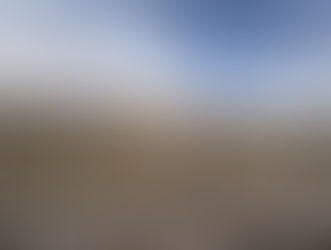Marianne Potterton, painter
- Warren Berger

- Jun 18
- 4 min read
Updated: Aug 20
I met Marianne Potterton, a painter who lives in the music-centric town of Doolin, at the Doolin Music House, where she was dropping in on her friends Christy Barry and Sheila Quinn. As I was conversing with this small group, I happened to mention (as I am wont to do) that I like to write in unusual places, such as castles and barns and sheds. Marianne said, “I’ve got a place you might like.” And that’s how I ended up, the next day, writing in a goose house.
Well, it used to be a goose house, though the geese are long gone. Marianne, upon moving into the little cottage next door, turned the now-empty shed into a mini-gallery/bar. The idea being that she could host her own art exhibitions, displaying her paintings on the shed’s walls while serving drinks from a makeshift bar. She hasn’t been entertaining guests there lately because her insurance lapsed and there’s a small leak in the roof. So, the shed is unused for now, though on the day I stopped by it was illuminated with a string of holiday lights and candles all around, as well as a small table and chair set up for a visiting writer.
Exercising my fingers to stay warm
With floor and walls of solid flagstone and no windows, the shed felt very cave-like. I sat facing a door that opened out to the pouring rain, which pounded on the tin roof above. It was chilly enough that I had to throw a blanket over my shoulders and I warmed my fingers occasionally on the small flame of a candle. But I also kept my fingers warm by typing; harsh conditions can make you productive. I wrote there for a good hour and a half.
Before retreating to the goose house, I had briefly toured Marianne’s working studio, on the upstairs floor of her cottage. Dozens of paintings were stacked against the walls around us; a wood-burning stove was in the middle of the studio; bright sunlight streamed down from a skylight window.

Marianne told me she’s just getting back into the flow of working on her art, after a long break to walk the Camino de Santiago pilgrimage route in Spain. She observed that the longer you’ve been away from your creative work (doing other things), the harder it is to dive back in—you can develop a feeling of detachment from your own creativity. But once you force yourself to get past that feeling and become immersed in the work you start to reap the benefits of your time away. She said she now felt “charged up” with fresh ideas and new energy.
Marianne noted that “there’s a very sunny energy in Spain, as opposed to a more broody kind of energy” in West Ireland. Broodiness notwithstanding, she loves the Burren and is inspired by it. Coming from other parts of Ireland, she told me, “I got to know the Burren first as a teenager. The landscape felt like a dream, like going into another realm. I had to go back at least once every year to get my fix.” She finally moved here full-time 17 years ago.
Initiatives and experiments
Marianne is clearly a talented artist and a prolific one. She’s had gallery shows but hasn’t achieved the kind of recognition that, say, Richard Hearns has, and so she must be resourceful and creative in trying to sell her work and make ends meet. She relies on some government assistance (the Irish government is supportive of artists, she said), but she is also open to trying various initiatives and experiments, both in promoting her work and in creating it.
For example, Marianne decided recently that she would spend a week creating various pieces of art and then invite people to come to an exhibition of just those freshly-made works. These visitors could pay whatever they liked for any of the pieces, putting the money in a box. “The idea was for me to make enough money to pay for the next week’s work,” she said. She was surprised by how much the pop-up exhibit made—and also surprised by how productive she was when she put herself on that demanding one-week work schedule.
Another offbeat experiment she tried: “I copied daily rituals of various people to see how it would affect my own work,” she said. She’d interview a person to find out what time they got up in the morning, what they did first, what kind of music they listened to, what they had for meals, how many hours they worked, and so forth—then she’d copy those behaviors for a week. “It was interesting; I felt like it changed my perspective and my work habits,” she said.
Seeing that Marianne was keen on experimenting, I asked if she wanted to take part in the creative experiment I’m enrolling people in for my book—in which participants will seek out some version of their own ‘Burren,’ spend time there, and then see what kind of creative work results. Marianne said she’s up for it, and luckily for her, she doesn’t have to look far to find her Burren—it’s right outside her door.














Comments